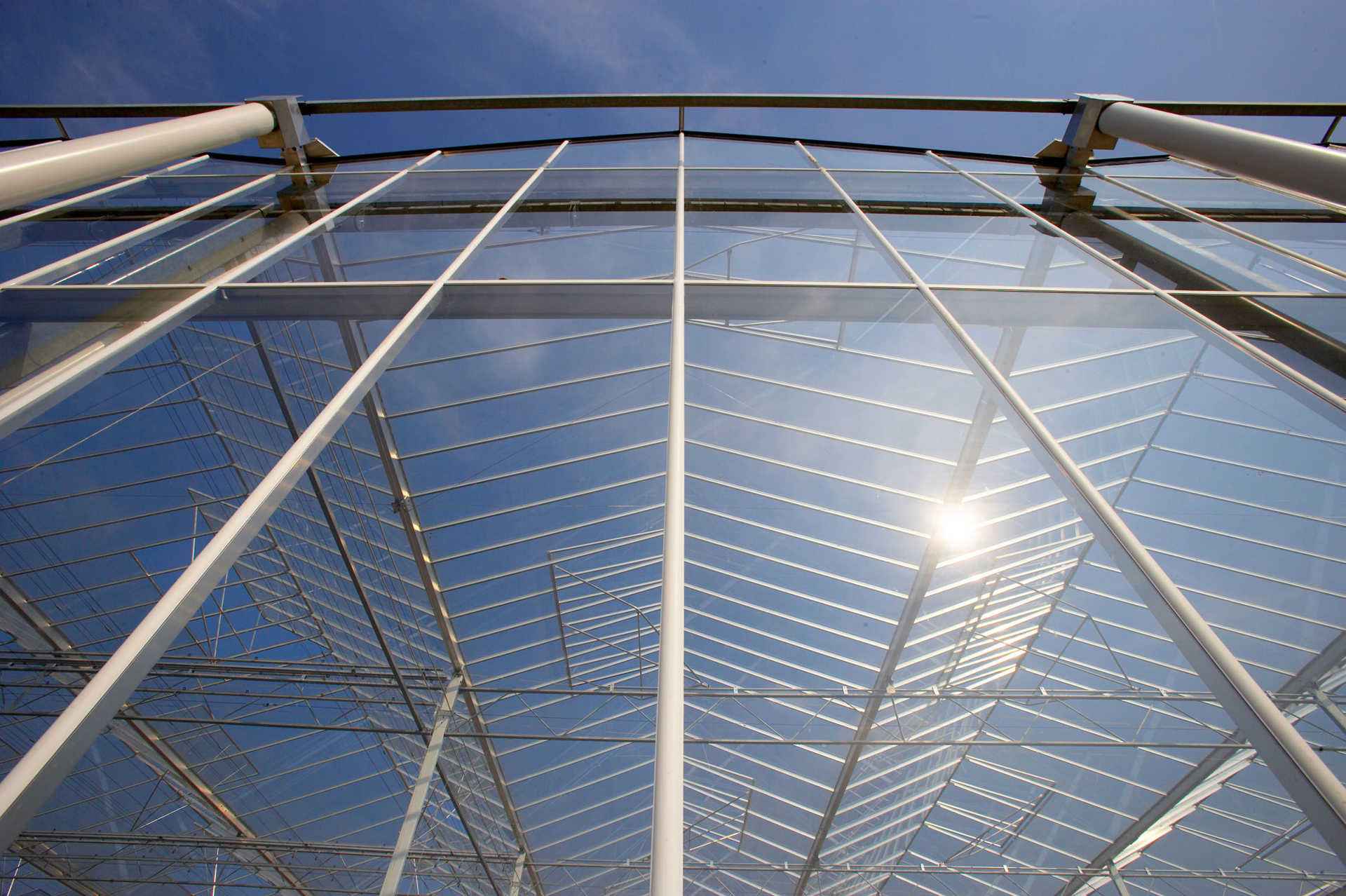Dehumidification

Short definition
Controlled removal of water vapor from greenhouse air to sustain crop-safe humidity, prevent canopy condensation, and enable evaporative cooling through ventilation, AHU condensation, or sorption systems.
Expanded definition
=Dehumidification in greenhouse contexts is the controlled extraction of water vapor from the crop environment to stabilize humidity, reduce leaf wetness, and support reliable evaporative cooling. In regular, closed or semi-closed Dutch greenhouses, it integrates with ventilation strategies, condensation-capable AHUs, and desiccant units to manage latent load while limiting energy penalties. It enables tighter irrigation scheduling, improved disease risk management, and better control of dew-point-related condensation on leaves and roof surfaces. Automated climate loops rely on sensors for absolute humidity, dew point, and temperature to coordinate ventilation, screens, and cooling devices for crop activation while preserving quality. Absolute humidity targets are commonly around 10 g/kg at 29°C, with peaks toward 20–25 g/kg at higher dew points. Synonyms and abbreviations: Dehumidification, Humidity control, Moisture removal, Vapor removal, Dew-point control, Absolute humidity control, Air dehumidification.
In Greenhouse Context
Dehumidification is central to climate stability in glass greenhouses where closed or semi-closed operation compresses latent load. In practice, growers rely on a mix of ventilation, condensation-capable AHUs, and selective desiccant relief to maintain target humidity without compromising photosynthesis or CO2 balance. When RH is controlled tightly, leaf wetness events decline, reducing foliar disease pressure and unfavorable microclimates. Sensors measuring absolute humidity, dew point, and air temperature feed control loops that optimize the sequence and speed of ventilation, cooling devices, and above-screen extraction. Absolute humidity targets are commonly around 10 g/kg at 29°C, with peaks toward 20–25 g/kg at higher dew points, informing setpoints and energy use. Automated screens and diffuse shading help separate latent and sensible heat exchange, enabling evaporative cooling while mitigating condensation on roofs and canopy surfaces. The energy cost of dehumidification depends on the chosen path: direct mechanical cooling with HortiCoolers is energy-intensive but precise, while desiccant systems can be more economical at low dew points yet require regeneration energy and media maintenance. In practice, integration with irrigation schedules ensures humidity targets are maintained after fertigation or high transpiration periods. Operators balance crop activation with disease risk by adjusting AHU setpoints, vent cadence, and screen gaps, particularly on hot, humid days. Regular calibration of hygrometric sensors is essential to avoid drift and ensure stable climate control loops; maintenance of screens, ducts, and condensate drains prevents leakage and humidity hotspots. Across operations, dehumidification supports tighter climate envelopes, improves airflow uniformity, and enhances the reliability of evaporative cooling strategies, enabling consistent yields, better fruit quality, and reduced disease incidence in Venlo structures. It interfaces with energy management, monitoring dashboards, and automation to sustain crop health and resource efficiency.
Examples and/or use cases
Night-time outdoor air blow-in with above-screen extraction lowers absolute humidity while diffuse screens reduce radiant heat transfer; AHUs with condensation coils cool and dehumidify recirculated air in closed greenhouses; HortiCooler systems provide mechanical cooling paired with dehumidification to preserve crop activation during heatwaves; Desiccant dehumidifiers are deployed for very low dew-point targets when condensation on surfaces is impractical; Active screen management using energy and diffuse screens minimizes condensation on screens and roof while promoting uniform air movement; Weather-driven ventilation scheduling balances latent load with energy use during peak solar hours; Irrigation timing and fertigation strategies are adjusted to limit humidity spikes between cycles; Energy recovery from exhaust air reduces net electrical demand; Regular dew-point setpoint checks ensure canopy protection across crops; In tomatoes, maintaining RH around 60–70% during fruit set reduces cracking; In cucumbers, tight RH control avoids tissue edema; In leafy greens, stable RH supports consistent transpiration and quality; Sensor calibration and maintenance visits prevent drift that would otherwise degrade control accuracy.
Relevance
Dehumidification sits at the intersection of psychrometrics, crop physiology, and control theory. It defines how latent heat is managed relative to sensible heat, shaping energy use, climate uniformity, and crop response. Real-time sensing of absolute humidity and dew point informs PID or MPC algorithms to modulate AHUs, vents, screens, and cooling devices, translating atmospheric properties into actionable control actions. For designers, the choice between condensation-based AHUs and desiccant systems affects capital costs, maintenance, and lifecycle economics; for growers, it influences yield stability, fruit quality, and seasonal continuity. The field emphasizes crop-stage dependent targets, sensor integrity, and data-driven setpoints that align with external weather and irrigation regimes. Three dehumidification families emerge: ventilation-based RH management, condensation via AHUs, and sorption dehumidification; each requires site-specific evaluation, considerations of energy penalties, and crop-specific RH targets. Practically, this translates into SOPs for sensor calibration, maintenance, and anomaly handling, and into automation strategies that minimize manual intervention while ensuring crop safety and resource efficiency. The literature supports the three families and underscores the need for crop-by-crop validation and lifecycle-cost analyses to guide decision-making in Venlo greenhouses.